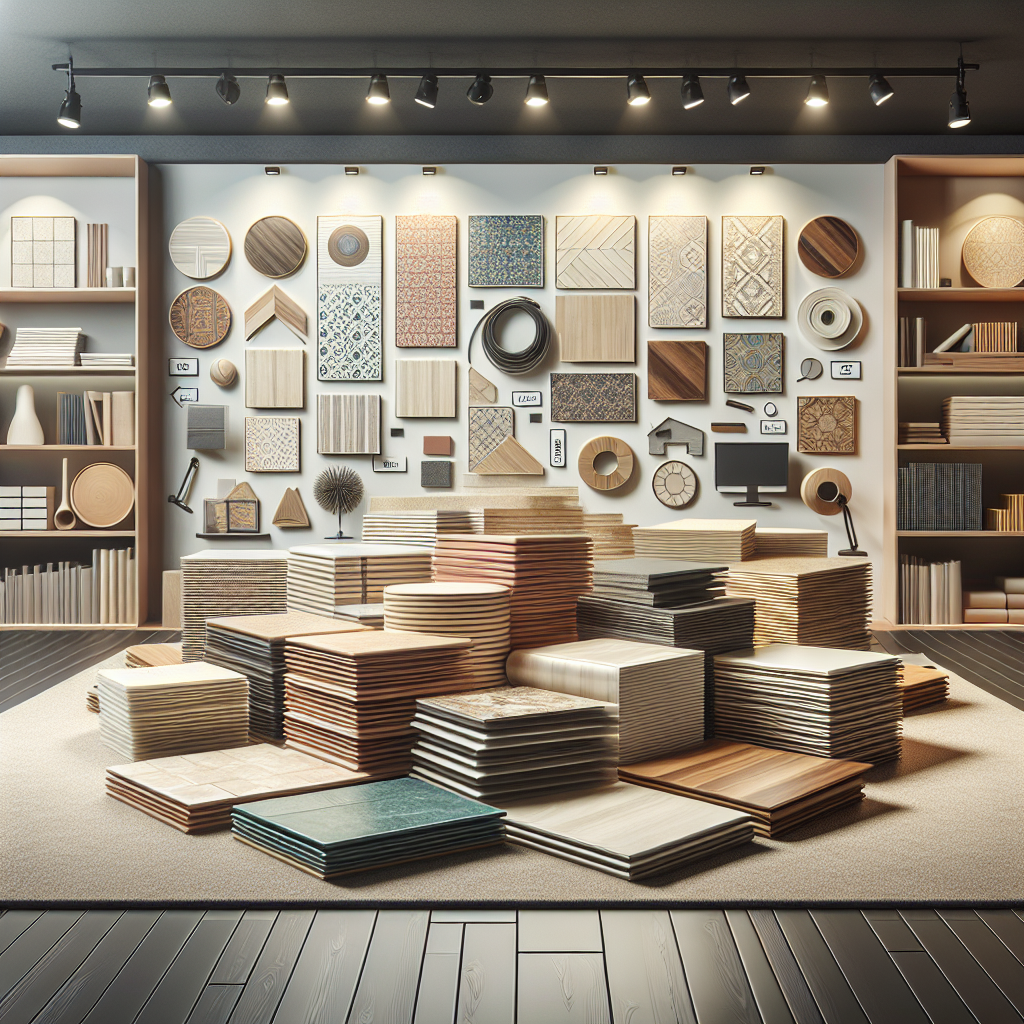Basements often serve as versatile spaces in our homes, transforming into everything from cozy family rooms to functional workshops. However, one crucial aspect of basement design that can greatly influence its function and aesthetic is flooring. With various materials to choose from, making the right choice can be overwhelming. In this article, we’ll explore popular basement flooring options, highlighting their advantages, disadvantages, and ideal use cases to help you make an informed decision.
Why Choosing the Right Flooring Matters
Before diving into specific materials, it’s essential to understand the unique challenges that basements present. Basements are often prone to moisture, temperature fluctuations, and potential flooding. Choosing the right flooring can protect your investment, enhance comfort, and contribute to the overall design of your home.
1. Vinyl Flooring: The Budget-Friendly Champion
Advantages
- Water Resistance: Vinyl flooring is inherently water-resistant, making it an ideal choice for damp basement conditions.
- Affordability: Generally more cost-effective than other flooring options, it provides an excellent balance between price and performance.
- Variety of Styles: Available in a wide range of colors, patterns, and textures, vinyl can mimic the look of wood or stone at a fraction of the cost.
Disadvantages
- Lifespan: While durable, vinyl flooring may not last as long as hardwood or tile, particularly in high-traffic areas.
- Environmental Concerns: Some vinyl products may contain harmful chemicals, so it’s essential to choose materials that are certified for indoor air quality.
Best for: Homeowners on a budget looking for versatile, moisture-resistant flooring that can mimic higher-end looks.
2. Carpet: The Cozy Comfort Choice
Advantages
- Warmth and Comfort: Carpet can add warmth and sound insulation to your basement, making it feel more inviting.
- Variety of Styles: Like vinyl, carpets come in various colors and patterns, allowing for personalization of your space.
Disadvantages
- Moisture Sensitivity: Carpets can absorb moisture, leading to mold and mildew issues if proper precautions aren’t taken.
- Maintenance: Regular cleaning and professional shampooing are necessary to maintain appearance and freshness, especially in a humid environment.
Best for: Basements intended for living areas or children’s playrooms, where added warmth and comfort are desired.
3. Tile: The Durable and Stylish Option
Advantages
- Waterproof: Ceramic or porcelain tile is completely waterproof and resistant to mold and mildew, making it perfect for damp climates.
- Longevity: With proper installation, tile can last for decades without significant wear and tear.
- Design Flexibility: Available in numerous styles, colors, and sizes, tile offers endless design possibilities.
Disadvantages
- Cold Underfoot: Tile can be uncomfortably cold, which may require the addition of rugs or underfloor heating for comfort.
- Installation Cost: Professional installation can be expensive, especially for intricate designs or patterns.
Best for: Homeowners looking for a long-lasting and stylish option in high-traffic areas such as home gyms or entertainment spaces.
4. Laminate: The Wood-Look Alternative
Advantages
- Affordable Aesthetic: Laminate can mimic the look of hardwood or stone for a fraction of the price.
- Easy Installation: Many laminate products are designed for DIY installation with click-lock systems.
- Durable Surface: Resistant to scratches and fading, laminate can withstand the rigors of everyday life.
Disadvantages
- Moisture Limitations: While some laminates have decent moisture resistance, they can still warp if exposed to excessive water.
- Resale Value: Laminate may not add as much value to your home as other flooring options like hardwood or tile.
Best for: Homeowners wanting a wood-look floor on a budget, especially in areas where water exposure is minimal.
5. Concrete: The Industrial Chic Choice
Advantages
- Extremely Durable: Concrete can withstand heavy foot traffic and is resistant to moisture when properly sealed.
- Design Versatility: Stained or polished concrete can be a stylish, modern option for your basement.
- Low Maintenance: Once sealed, concrete requires minimal upkeep, mainly occasional cleaning.
Disadvantages
- Hard Surface: The rigid nature of concrete can be uncomfortable for standing or sitting.
- Temperature Fluctuations: Concrete can retain cold, which may not be pleasant in cooler months without appropriate heating solutions.
Best for: Homeowners looking for an industrial aesthetic or those seeking a low-maintenance flooring solution.
Making the Right Choice for Your Basement
Choosing the right basement flooring material requires careful consideration of your specific needs, budget, and the intended use of the space. It’s essential to weigh the pros and cons of each material against the unique challenges basements often present.
Consider Your Space
- Moisture Levels: If your basement tends to retain moisture, prioritize water-resistant options like vinyl, tile, or protected laminate.
- Usage: Decide how you plan to use the space. For entertainment or living areas, comfort may be a priority, guiding your choice towards carpet or laminate. For a gym or craft room, durability may take precedence, favoring tile or concrete.
Final Thoughts
No matter which flooring option you choose for your basement, remember that it’s not just about aesthetics; it’s about creating a functional, welcoming environment that will enhance your daily life. By considering the specific requirements of your basement and the benefits of each type of flooring, you can make a decision that will stand the test of time, providing comfort and utility for years to come.


